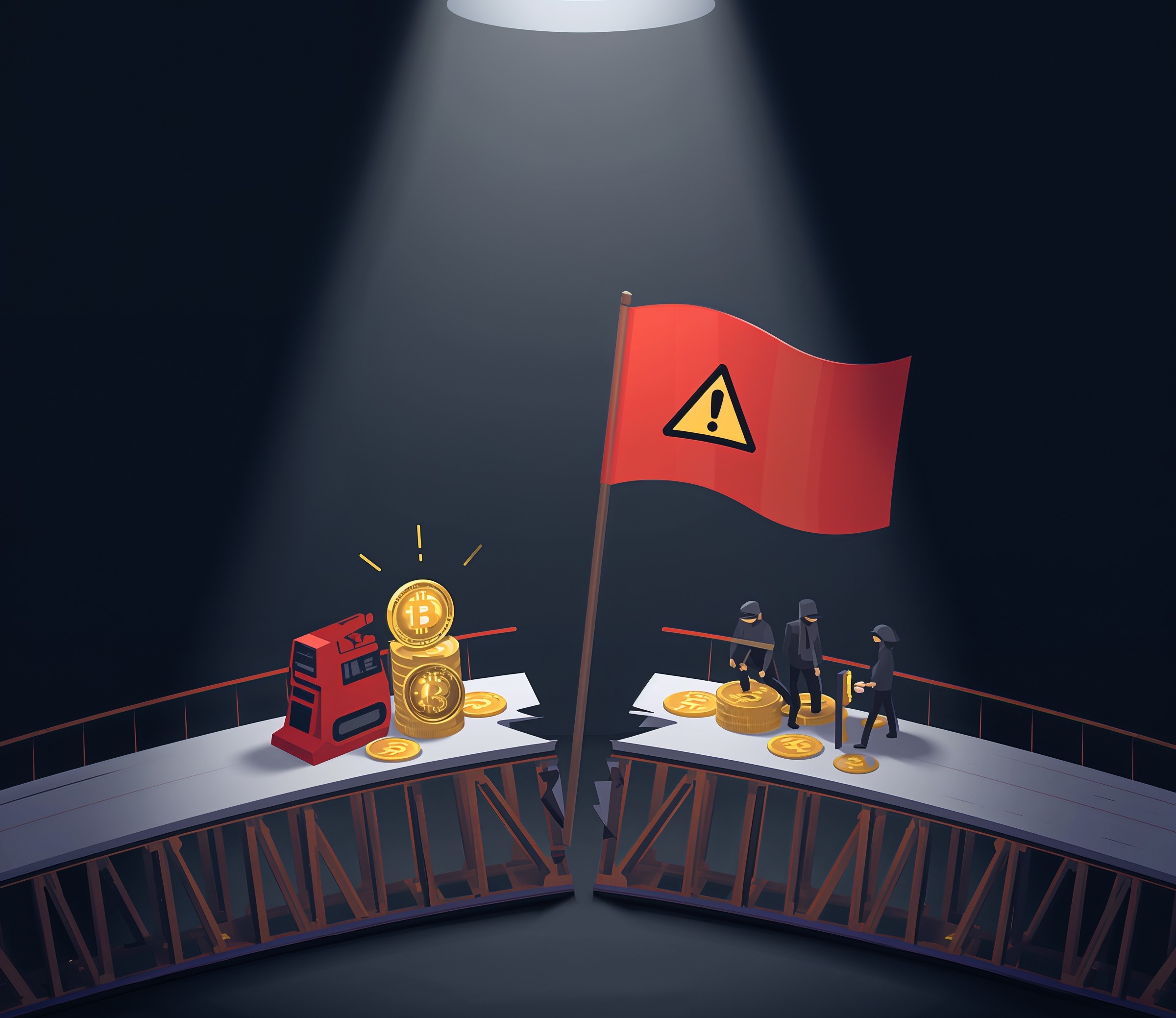Garden, a Bitcoin bridge that moves BTC across chains for faster settlement, suffered a multi-chain exploit that drained roughly $10.8–$11 million. The team said a “solver” component was compromised, while it claimed the protocol design remained intact. Meanwhile, on-chain investigators highlighted addresses and messages that point to broader exposure across several networks. Because the bridge touches exchanges and liquidity venues, any venue that processed Garden-linked flows should perform rapid screening, escalate monitoring, and prepare freeze decisions with clear appeal workflows. Furthermore, integrators should evaluate trust boundaries between protocol logic, solver infrastructure, and deployer authority.
What Garden Is and Why Bridges Draw Attacks
Garden acts as a BTC bridge with a “fast path” that relies on liquidity providers and solvers to fulfill swaps quickly. Therefore, it exposes several attack surfaces: custody and signing, message verification, liquidity routing, and role-based privileges for off-chain actors such as solvers. Because bridges aggregate value and route between ecosystems, they remain prime targets for both theft and laundering. Historically, cross-chain bridges accounted for large portions of crypto losses, and they continue to attract sophisticated actors. Consequently, defenders should treat bridge integrations as high-risk connections that require strict key-management, transparent limits, and anomaly detection on flows.
Timeline and On-Chain Movement
Reports placed the exploit on Oct 30–31 with losses spanning multiple chains. Soon after, the team contacted the exploiter’s address with a 10% “whitehat” offer recorded on-chain. Investigators also noted messages and funding patterns that link the solver to team-related infrastructure, although the project disputed protocol compromise. Because attackers quickly swapped freezeable assets into ETH and routed funds across chains, exchanges should load the flagged addresses, add chain-hopping heuristics, and watch for peel chains, dusting, and mixer entry points. Moreover, operations teams should set rate-limited withdrawal reviews for deposits tied to those paths.
Likely Attack Path and TTPs
Although the root cause remains contested, several failure modes consistently explain bridge drains. First, validator or solver key exposure allows unauthorized approvals or fills. Next, message-verification or relay logic issues permit spoofed events and fake credits. Then, liquidity pool or routing abuse can drain funds via mispriced or privileged paths. Finally, deployer powers, if insufficiently constrained, can be misused under duress or compromise. Because Garden emphasized a “single solver” issue, teams should inspect signing workflows, custody of hot keys, and the privilege model for solver API access. Additionally, they should stage incident simulations that assume key compromise plus rapid cross-chain swaps.
Indicators and Telemetry to Watch
Exchanges and compliance teams should monitor for clusters tied to flagged Garden flows, sudden cross-chain hops, quick swaps of stablecoins and WBTC into ETH, mixers with recent DPRK usage, and time-boxed bursts after pause notices. Moreover, they should flag deposits from addresses that sent or received on-chain negotiation messages. Because AML exposure persists after the initial drain, risk teams must continue screening for secondary hops, OTC cash-outs, and bridges commonly used for obscuring provenance. Finally, venues should enrich risk engines with Elliptic/Chainalysis typologies on chain-hopping and mixer selection.
Detection, Validation, and Triage
Start by loading all reported addresses and verified mirrors into your screening stack. Then, build watchlists for hop-patterns rather than only single addresses; include time-windows around the exploit and negotiator messages. Next, query for deposits linked to Garden-affiliated labels, solver wallets, or team-adjacent gas funding. After that, pause withdrawals for tainted funds, communicate freezes to users with an appeal path, and coordinate with analytics vendors for attribution updates. Finally, document exposure for regulators and partners while you raise the review threshold for high-risk bridges until controls harden.
Containment and Immediate Controls
First, populate a dynamic freeze list and wire it to exchange risk queues. Second, rate-limit bridge-origin deposits that match solver or deployer adjacency. Third, implement deposit-age checks and spread analysis to detect peel chains. Fourth, for integrators, pause high-risk routes, enforce wallet allow-listing for solver infrastructure, and require threshold signing for validator operations. Moreover, require out-of-band approval for any upgrade or parameter change that affects mint/burn authority. Because attacker flows often reappear after public negotiation, maintain heightened screening for at least two token lifecycles.
Hardening for the Next Attempt
Because bridges aggregate risk, build a layered defense. Mandate threshold or MPC keys for validators and solvers, with hardware-backed roots and strong operator separation. Add circuit breakers, per-route limits, time locks for privileged actions, and anomaly scoring for large or unusual fills. Additionally, integrate cross-chain analytics that detect chain-hops in near real time, then drill crisis playbooks with exchanges and market makers. Finally, schedule continuous third-party reviews and bug bounties that emphasize cross-domain logic and signer controls, which routinely fail in large bridge incidents.
FAQs
Q1. If we accept deposits, how should we treat funds tied to Garden-labeled addresses?
A1. Screen and quarantine first, notify users, and invite appeals with provenance evidence. Then, clear only after analytics vendors remove the risk label or after funds pass through a recognized remediation path.
Q2. We integrated Garden routes. What should we check before re-enabling them?
A2. Validate solver and signer hardening, confirm rate-limits, review deployer change controls, and require independent attestation that the specific failure mode was fixed.
Q3. How long should enhanced monitoring stay active?
A3. Keep it for at least two full key-rotation cycles and one upgrade window. Because attackers test responses, repeated probes often follow public statements.










